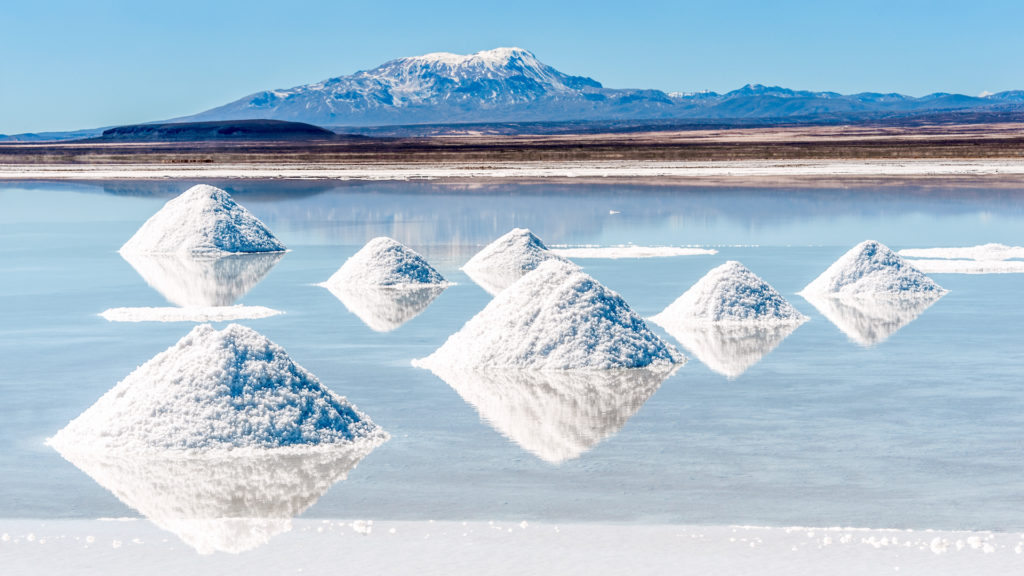Will Latin America become the sustainable frontier of rare earth metals?
In Latin America there are virtuous cases of exploitation of rare earths and “technological metals”. But we need a common regulatory framework..
Latin America has estimated reserves of rare earths and “technological metals” totaling 50 million tons. About 40% of all global supply. In Bolivia alone, the resources (potential reserves) of lithium, used in electric car batteries, would amount to 21 million tons. Argentina follows with 17 million tons and Chile, with 9 million. While Brazil is the world’s largest producer of niobium, with 59 thousand tons extracted in 2019 and 11 million tons of proven reserves. And then there is coltan, a crucial component for mobile phones and video cameras, mined with backward techniques and indigenous labor in Colombia, which owns 5% of global reserves.
These are just a few examples of the richness of rare metals in the Latin American subsoil. On the surface, however, there are the Amazon, the Bolivian highlands, the Sonoran desert: territories rich in culture and biodiversity. For whom mining represents an opportunity but also a threat.
To date, most of the benefits are exported to Asia
“The risks associated with rare earth mining in Latin America are very clear and common to all mining activities,” Julie Klinger, professor of geography at the University of Delaware, told Valori.it, who in 2017 published an essay entitled “Rare Earth Frontiers: From Terrestrial Subsoils to Lunar Landscapes.” ). “These are high social and environmental risks. In the face of minimal returns for the country of extraction and production, because the benefits are largely exported»
Those who benefit most are China or, in general, the countries of East Asia. The raw materials, or minimally processed, are in fact exported and processed in factories operated by foreign companies in East Asia. At the end of the processing, they are re-imported in the form of batteries, solar panels or magnets, which however have an added value and therefore a higher cost. It is also a common process in the United States: processing costs much less in Asia, where environmental regulations are also less stringent.
The virtuous case of the Brazilian CBMM
“We need a circular approach to production chains, within the countries of extraction, which also allows the processing and recovery of materials at the end of their life cycle and compliance with environmental standards,” adds Klinger. In a market where, to date, only 1% of materials are currently recycled, such a statement might seem utopian. Yet in Latin America, in the mining sector, there are already very advanced companies from this point of view. Like the Brazilian CBMM (Companhia Brasileira de Metalurgia e Mineração), the world’s largest producer of niobium, which covers more than 80% of the global supply. In 1997, it was the first mining company to obtain ISO 14001 Environmental Management System certification, one of the strictest environmental standards.
“Good practices already exist, why can’t we think of spreading them widely?” asks Klinger. What is lacking today, in Latin America, is a political and regulatory framework conducive to the development of companies such as CBMM. “Today, companies are competing with China, which has a development model based on as much output as possible at the lowest price. Those who want to adopt sustainable standards must be encouraged to do so.”
Supply could be circular and internal. Wanting
Latin American countries would have enough reserves of rare earth and metals to compete with China. In addition to a great interest in closing the supply chain, today vertical and located between North America and Asia, to make it circular and completely internal. At the moment, however, there is a lack of political will to act.
“South America can show that a more sustainable way of mining and processing rare metals is possible,” insists Professor Klinger. “This is the challenge for the future: just as we collect and compost domestic food waste today, which until a few years ago ended up in landfills, so we can do with electronic waste“.
“A few million dollars and certification would be enough.”
The technologies to do this would already be there because – says Klinger – you could use the same machines that are already used today to extract and shred metals. “Just as raw materials are shredded and screened, so you could butcher hard disks of computers or other technological devices, reduce them into granules and thus recover the rare metals they contain. We need to make processes efficient, but the technology is already there.” And there are already laws, at the international level, starting with the Basel Convention for the regulation of transboundary movements of hazardous wastes, of 1992.
The collection could be organized by public entities. But then companies should do their part, with appropriate incentives. “We already know that it would take a few million dollars to duplicate mining company processes,” Klinger said. “Two parallel chains would be built, with similar machinery, suitably adapted: the one that separates the metals originally and the one that shreds the technological devices to recover them”.
The “few million dollars” should be made available to the states, because it is in their primary economic and geopolitical interest. “To this could be added a sticker, a certification of the recovered materials, as has been done in other markets. Only in this way will it be possible to free ourselves from China. And make Latin America the sustainable frontier of rare metals.”


